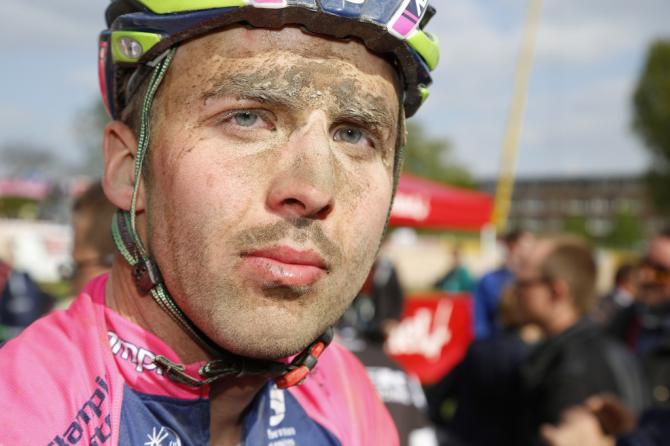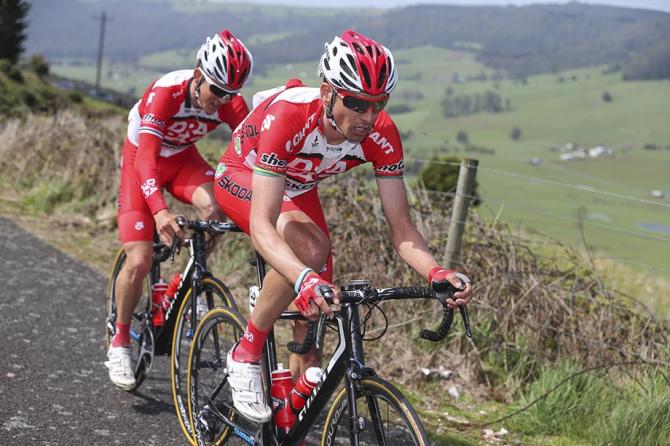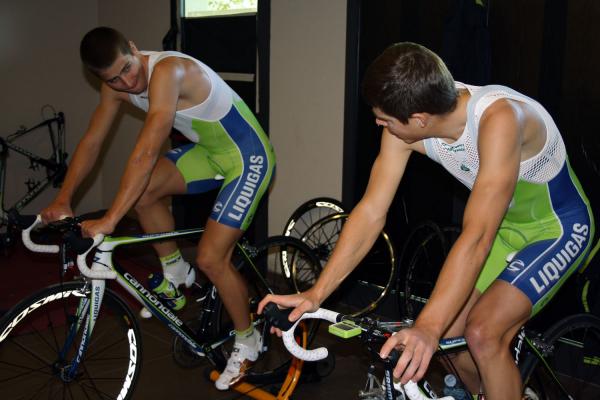Riders disqualified from the Tour of Utah for holding onto vehicles
Sagan, Palini and Lapthorne and their team vehicles put out the race




Hanging onto a team car won't get you very far at the Tour of Utah. Three riders were eliminated from the race during stage four when officials witnessed them holding onto a vehicle in an attempt to regain the peloton after getting dropped on the first climb of the day.
Officials eliminated Lampre-Merida's Andrea Palini, Cannondale's Juraj Sagan and Drapac's Darren Lapthorne from the race as well as team directors Carlo Guardascone of Lampre-Merida, Mattias Michelusi of Cannondale and Jonathan Breekveldt of Drapac. Each of the teams also lost their second team vehicle from the race caravan for the rest of the week.
"A race is won with your legs, not with the help of team vehicles," said Adrien Levesque, president of the commissaires panel at the race. "We just applied the regulation as it's always been there. There's nothing new there."
The three riders who were eliminated were off the back of both the peloton and the gruppetto very early in the 168.5km stage that finished with the Hors category climb to Powder Mountain. The Tour of Utah bills itself as America's toughest stage race, and Levesque said a lot of climbing often leads to this type of offense.
"It's always an issue we see on climbs. Whether it's more at this race, I would say no," he said. "It's a very difficult race, it's a beautiful race. Given the opportunity to make the time cut or not, riders are going to make their own decisions and live by the consequences."
More lax rules outside the US
Lampre-Merida team leader Chris Horner said the problem may have arisen because enforcement of the rule can be more lax outside the US.
The latest race content, interviews, features, reviews and expert buying guides, direct to your inbox!
"Normally the difference is that in Europe if you were to grab onto the car you would get a warning or two," he said. "Our guy was sick. There's always a reason for someone to be back there. They are either sick or hurt or injured, or they've had a flat tire or something to be off of the gruppetto. Everyone here can ride in the gruppetto, especially on my team. They are all of that kind of quality. So they're either sick, hurt, injured or flat."
"It's not the wrong thing to do," Horner continued. "That's the rule, so the officials are fair. I mean there's nothing wrong with that. It's fair. But we are used to a little bit more bending of the rules than that, and so we just expected because our guy hadn't been able to eat all day that they'd get a warning or two before there would be a problem. So it's not a big, big ordeal. In Europe they're a little easier with that sort of thing because they understand how much suffering we're doing each day to get to the finish."
The riders still in the Tour of Utah will have to endure one more day of climbing on Sunday when the race concludes with the traditional finale stage, a 125.5km route that starts and finishes in Park City.
The stage includes two climbs, the category 2 climb through Wolf Creek Ranch and the Hors category climb over Empire Pass that comes before the descent to the finish in Park City.
Growing up in Missoula, Montana, Pat competed in his first bike race in 1985 at Flathead Lake. He studied English and journalism at the University of Oregon and has covered North American cycling extensively since 2009, as well as racing and teams in Europe and South America. Pat currently lives in the US outside of Portland, Oregon, with his imaginary dog Rusty.